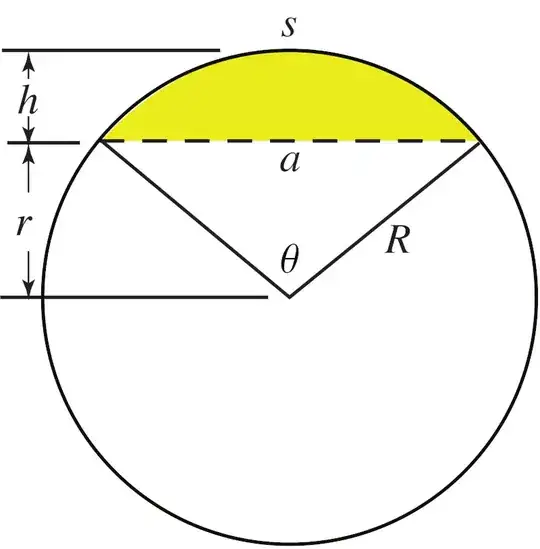Please imagine that we have a circular segment with some arc length 's' and chord length 'a' (using notation from http://mathworld.wolfram.com/CircularSegment.html):
Provided only 'a' and 's', and placing the left-hand-side point of the chord at the origin of the Euclidean plane (or a more convenient point), is there sufficient information to write an expression for the height of the circular segment (i.e. the y-axis/"vertical" distance between the chord on the x-axis and the circular arc) as a function of a position on the chord?
It's a simple matter to express the chord length in terms of the arc length and theta: $a = (s) * 2\frac{\sin(\frac{\theta}{2})}{\theta}$, or an expression for the arc length in terms of the chord length and theta: $s = \frac{a\theta}{2\sin\frac{\theta}{2}}$. And one can write an express for the maximum height as: $h = R - \frac{1}{2}\sqrt{(-a)^2+4R^2}$, where the radius of the circle, 'R' is related to theta as: $R = \frac{1}{2} \sqrt{\frac{a^2}{\cos^2\frac{\theta}{2}-1}}$.
If there is insufficient information to accomplish the above, I would love to have an intuitive explanation for why this is so.
